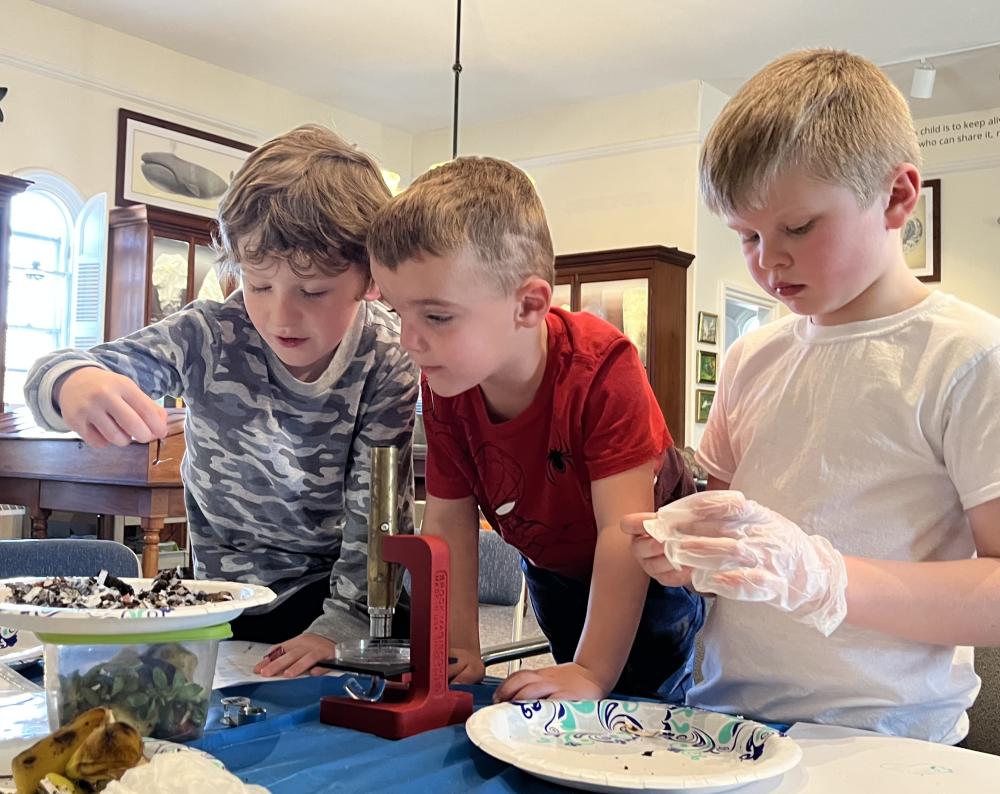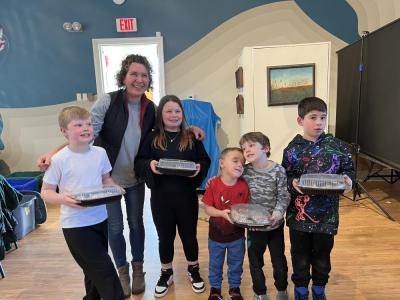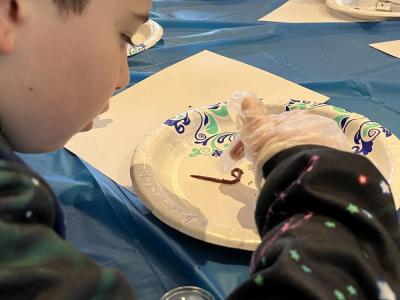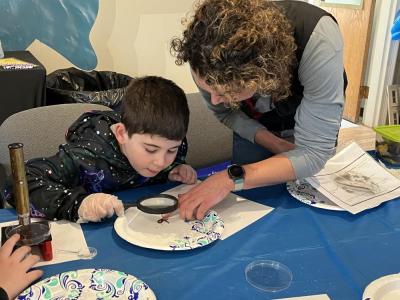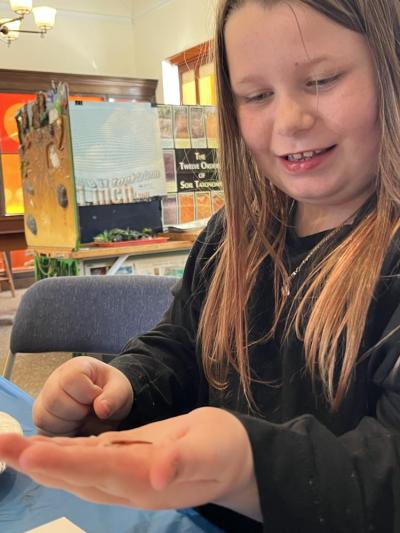Wiggly wonders: Marion Natural History Museum hosts worm event
MARION — Digging deep into the science behind worms, children got their hands dirty at the Marion Natural History Museum.
With red wriggler worms, shredded paper and dirt the kids learned about the art of composting with soil scientist Maggie Payne Wednesday, March 19. Microscopes and magnifying glasses let the children get a closer look at the creatures while Payne gave fun facts and taught them about the anatomy behind the worms.
Payne is on the board with the museum, and said being able to help kids learn in a hands-on way is something she enjoys doing.
“People are grossed out a lot of times by worms, but some kids are really into it,” she said. “When you start looking really closely and investigate how they’re put together and what they look like up close — it’s neat.”
Some children wore gloves and others chose to touch the worms with bare hands. Ashlynn Mills, 8, of Marion held the worms in her hands with no protection — something she does at home often.
She said one of her favorite things was being able to take the worms with her.
“I made worms a house that they can live in and survive,” Mills said, “When they get scared they squirt out yellow stuff.”
The worms handled by the children were constantly excreting a coelomic fluid, which is a yellow liquid that they leave behind when they are stressed — like when they are being touched or exposed to the light.
Some kids like 6-year-old Leo Oliver and 5-year-old Sawyer Fiske, both of Marion, named the worms they took home. The two are in the same kindergarten class and shared a worm habitat.
Fiske said that his worm felt cold when he touched it.
“They eat like four things at a time,” Fiske said. “Mine — his name was Jasper — and he ate everything.”
Oliver recalled some of the science he was taught by Payne during the event.
“They make dirt, and they eat what’s decomposed,” Oliver said.
Payne said she is glad that events like the red wiggler worm activity can give people a way to get involved with composing.
“It doesn’t end up being a lot of material to do something like this,” Payne said. “People can put it in their potted plants — or give it away. But it’s so much less waste, and one less thing they’re throwing away in the trash.”



